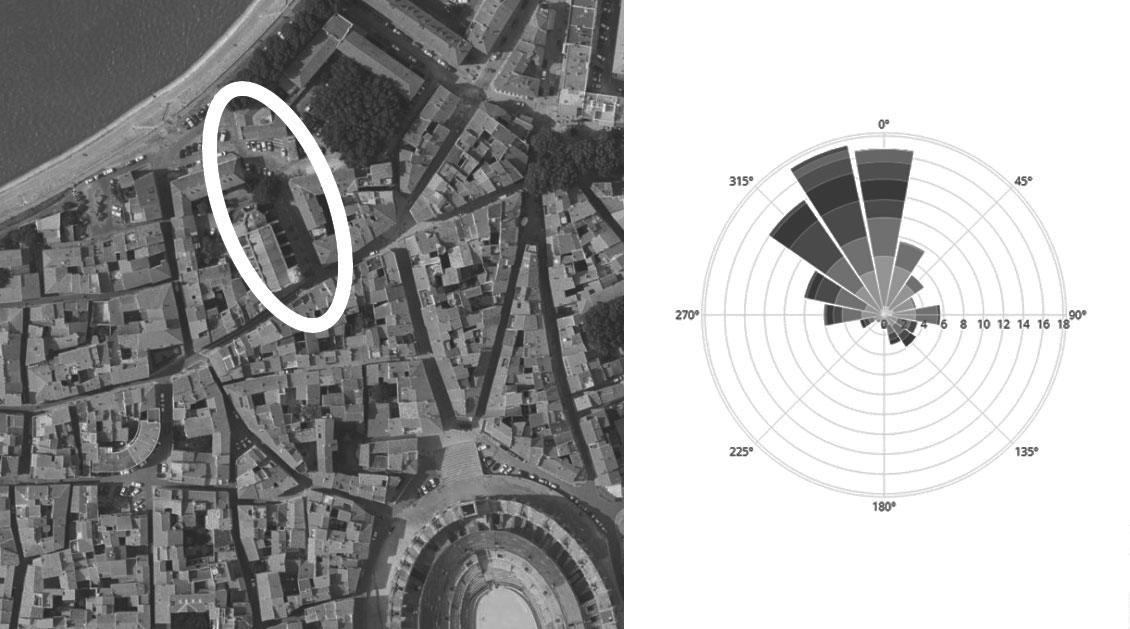
There are many "streets of the icehouse" in several cities and villages in France for the simple reason that there used to be an icehouse (an underground structure to store ice).
But the "icehouse streets" are quite different.
They were named thus by the inhabitants who suffered from the cold they could feel when using them.
In winter, the wind contributes to considerably degrading thermal comfort, because it considerably increases heat loss by convection directly in contact with the skin and through clothing.
These "ice streets" are often oriented in the axis of the prevailing winds in winter and are widely open.
In the city of Arles, for example, rue Saint-Julien was considered an "icehouse street" (image).
It is oriented in the direction of the mistral, which is the dominant wind, as shown by the wind rose for the period from December to February.
It is relatively wide compared to other streets with the same orientation.
The fact that it opens directly onto the banks of the Rhône further increases its exposure to the wind despite the obstacle constituted by the building at the entrance to the street.
Indeed, the expanse of water formed by the Rhône (which is itself oriented in the axis of the mistral) offers very little surface resistance to the wind as a group of buildings could do.
We can therefore assume that the speed of the mistral is at its maximum at the entrance to rue Saint-Julien, which would require confirmation by simulation or measurements.
This exposure to the mistral contributes to making it very uncomfortable in winter, hence its nickname of "ice street" among the inhabitants of the city of Arles.
Source: Jean-Marc Bernard
Image: Géoportail, CBE